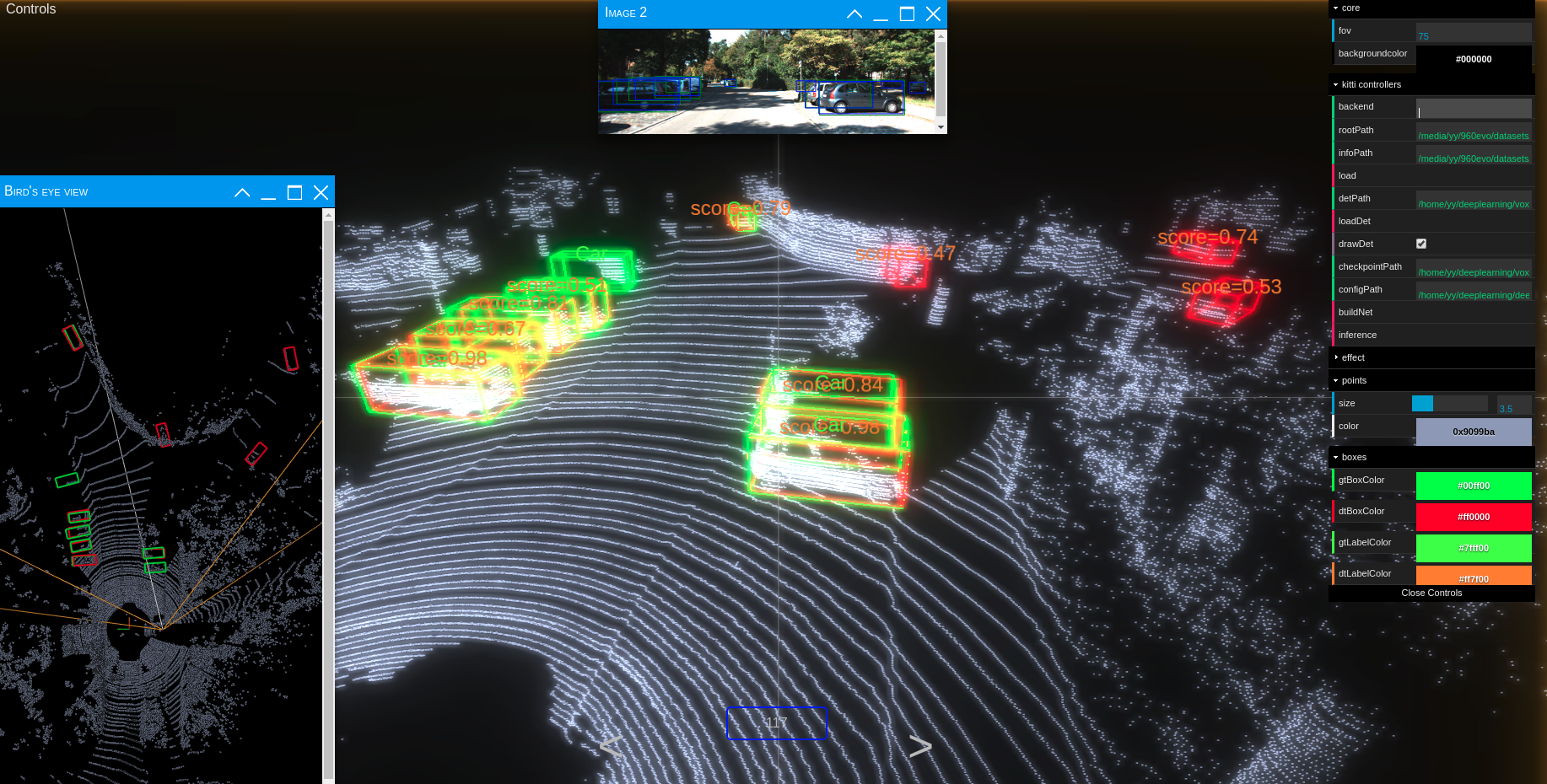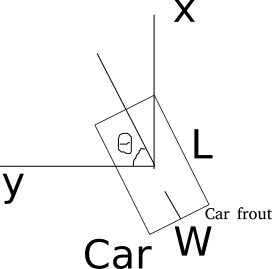This is the source code for my 19th place solution in Kaggle's Lyft 3d Object Detection Challenge.
I used original second.pytorch and modified it to get it working for the lyft competition.
Modifications:
- Support for Lyft's level 5 dataset.
- Some small tweaks to get the nuscenes version working for lyft.
- The evaluation code is modified to include competition's evaluation metric which uses a range of IoU thresholds for mAP (unlike the original metric which used a range distance thresholds).
- second/notebooks/*.ipynb files contain my submission and inference testing code, it needs some cleanup
ONLY support python 3.6+, pytorch 1.0.0+. Tested in Ubuntu 16.04/18.04/Windows 10.
git clone https://github.com/pyaf/second.pytorch.git
cd ./second.pytorch/secondIt is recommend to use Anaconda package manager.
conda install scikit-image scipy numba pillow matplotlibpip install fire tensorboardX protobuf opencv-pythonFollow instructions in spconv to install spconv.
If you want to train with fp16 mixed precision (train faster in RTX series, Titan V/RTX and Tesla V100, but I only have 1080Ti), you need to install apex.
Add following line to your .bashrc, update the path accordingly
export PYTHONPATH="${PYTHONPATH}:/media/ags/DATA/CODE/kaggle/lyft-3d-object-detection/second.pytorch"
- Lyft Dataset preparation
Download Lyft dataset:
└── LYFT_TRAINVAL_DATASET_ROOT
├── lidar <-- lidar files
├── maps <-- unused
├── images <-- unused
├── data <-- metadata and annotations
└── v1.0-trainval <-- softlink to `data`
└── NUSCENES_TEST_DATASET_ROOT
├── lidar <-- lidar files
├── maps <-- unused
├── images <-- unused
├── data <-- metadata and annotations
└── v1.0-test <-- softlink to `data`
NOTE: v1.0-* folders in train/test folders are soft links to corresponding data folders
python create_data.py nuscenes_data_prep --root_path=LYFT_TRAINVAL_DATASET_ROOT --version="v1.0-trainval" --dataset_name="NuScenesDataset" --max_sweeps=10
python create_data.py nuscenes_data_prep --root_path=LYFT_TEST_DATASET_ROOT --version="v1.0-test" --dataset_name="NuScenesDataset" --max_sweeps=10LYFT_TRAINVAL_DATASET_ROOT are full path to train set of the dataset, similaryly for LYFT_TEST_DATASET_ROOT.
Prepare gt_data_train.json/gt_data_val.json files using prepare.ipynb, follow the comments.
Rest of this readme is from original second implementation.
- Modify config file
There is some path need to be configured in config file:
train_input_reader: {
...
database_sampler {
database_info_path: "/path/to/dataset_dbinfos_train.pkl"
...
}
dataset: {
dataset_class_name: "DATASET_NAME"
kitti_info_path: "/path/to/dataset_infos_train.pkl"
kitti_root_path: "DATASET_ROOT"
}
}
...
eval_input_reader: {
...
dataset: {
dataset_class_name: "DATASET_NAME"
kitti_info_path: "/path/to/dataset_infos_val.pkl"
kitti_root_path: "DATASET_ROOT"
}
}python ./pytorch/train.py train --config_path=./configs/car.fhd.config --model_dir=/path/to/model_dirAssume you have 4 GPUs and want to train with 3 GPUs:
CUDA_VISIBLE_DEVICES=0,1,3 python ./pytorch/train.py train --config_path=./configs/car.fhd.config --model_dir=/path/to/model_dir --multi_gpu=TrueNote: The batch_size and num_workers in config file is per-GPU, if you use multi-gpu, they will be multiplied by number of GPUs. Don't modify them manually.
You need to modify total step in config file. For example, 50 epochs = 15500 steps for car.lite.config and single GPU, if you use 4 GPUs, you need to divide steps and steps_per_eval by 4.
Modify config file, set enable_mixed_precision to true.
-
Make sure "/path/to/model_dir" doesn't exist if you want to train new model. A new directory will be created if the model_dir doesn't exist, otherwise will read checkpoints in it.
-
training process use batchsize=6 as default for 1080Ti, you need to reduce batchsize if your GPU has less memory.
-
Currently only support single GPU training, but train a model only needs 20 hours (165 epoch) in a single 1080Ti and only needs 50 epoch to reach 78.3 AP with super converge in car moderate 3D in Kitti validation dateset.
python ./pytorch/train.py evaluate --config_path=./configs/car.fhd.config --model_dir=/path/to/model_dir --measure_time=True --batch_size=1- detection result will saved as a result.pkl file in model_dir/eval_results/step_xxx or save as official KITTI label format if you use --pickle_result=False.
You can download pretrained models in google drive. The car_fhd model is corresponding to car.fhd.config.
Note that this pretrained model is trained before a bug of sparse convolution fixed, so the eval result may slightly worse.
I've modified original Kitti viewer to get it working for lyft inference, do give it a try after training.
-
run
python ./kittiviewer/backend/main.py main --port=xxxxin your server/local. -
run
cd ./kittiviewer/frontend && python -m http.serverto launch a local web server. -
open your browser and enter your frontend url (e.g. http://127.0.0.1:8000, default]).
-
input backend url (e.g. http://127.0.0.1:16666)
-
input root path, info path and det path (optional)
-
click load, loadDet (optional), input image index in center bottom of screen and press Enter.
Firstly the load button must be clicked and load successfully.
-
input checkpointPath and configPath.
-
click buildNet.
-
click inference.
You should use kitti viewer based on pyqt and pyqtgraph to check data before training.
run python ./kittiviewer/viewer.py, check following picture to use kitti viewer:

- Kitti lidar box
A kitti lidar box is consist of 7 elements: [x, y, z, w, l, h, rz], see figure.
All training and inference code use kitti box format. So we need to convert other format to KITTI format before training.
- Kitti camera box
A kitti camera box is consist of 7 elements: [x, y, z, l, h, w, ry].

